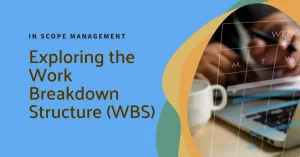I Introduction
Hello, fellow project management enthusiasts! I’m excited to embark on a journey with you today as we delve into the fascinating world of PMO structures. If you’ve ever been involved in project management, you know how crucial it is to have a well-functioning Project Management Office (PMO) to ensure success. But did you know that not all PMOs are created equal? In fact, there are three main types of PMO structures that can significantly impact the way projects are managed and their outcomes.
In today’s blog post, we’ll be exploring the differences between these three PMO structures – supportive, controlling, and directive – and examining how each one affects project management processes and outcomes. My aim is to provide you with valuable insights and practical advice to help you choose the best PMO structure for your organization or even enhance the existing one.
Whether you’re a seasoned project manager, an aspiring professional, or simply someone who wants to learn more about the fascinating world of project management, this post is for you. So, grab a cup of coffee, sit back, and let’s dive right in!
II Supportive PMO
Now that we’ve set the stage, let’s start by taking a closer look at the first PMO structure: the supportive PMO. As the name suggests, a supportive PMO is all about providing assistance, resources, and guidance to help project teams excel in their work. Picture it like a helpful friend or mentor, always there to offer a helping hand when needed but not overly controlling or dictating how projects should be managed.
A Role of a Supportive PMO in Project Management
A supportive PMO typically takes on a consultative role, offering access to resources, templates, and best practices that project teams can use to streamline their work. These resources might include standardized project documentation, risk management tools, or communication templates, to name just a few. The supportive PMO is also there to provide guidance and advice when needed, either informally or through organized training and development sessions.
B Pros and Cons of a Supportive PMO Structure
The supportive PMO has several advantages, including:
- Flexibility: It allows project teams to work autonomously, which can lead to greater creativity and innovation.
- Adaptability: It can cater to different project management methodologies and styles, making it a versatile choice for organizations with diverse project portfolios.
However, there are also some potential downsides to consider:
- Lack of control: With limited oversight, project teams may deviate from established best practices, leading to inconsistent results.
- Resource allocation: Since the supportive PMO doesn’t directly manage projects, it may not have a clear understanding of resource needs, resulting in potential inefficiencies.
C Best Scenarios for Implementing a Supportive PMO
A supportive PMO structure is particularly well-suited for organizations with a mature project management culture, where project teams have demonstrated the ability to self-manage effectively. It can also be a great fit for companies that value autonomy and creativity, or those with smaller-scale projects that don’t require a high degree of oversight.
In the next section, we’ll dive into the second PMO structure: the controlling PMO. Stay tuned to discover how it compares to the supportive PMO and when it might be a better choice for your organization.
III Controlling PMO
After exploring the supportive PMO, let’s now turn our attention to the second type of PMO structure: the controlling PMO. Unlike the supportive PMO, which acts as a helpful advisor, the controlling PMO takes a more hands-on approach to project management. It’s like a diligent coach who sets the rules of the game and keeps a close eye on the players to ensure they follow the playbook.
A Role of a Controlling PMO in Project Management
The main responsibility of a controlling PMO is to establish and enforce project management frameworks, standards, and best practices. This involves defining processes, methodologies, and performance metrics that project teams must adhere to. In addition, the controlling PMO actively monitors and reviews project performance, providing feedback and guidance to help teams stay on track and continuously improve.
B Pros and Cons of a Controlling PMO Structure
The controlling PMO offers several key benefits, such as:
- Consistency: By enforcing standardized processes and methodologies, the controlling PMO promotes consistency and predictability in project outcomes.
- Quality assurance: Regular monitoring and review of project performance helps identify potential issues early and mitigate risks.
However, it’s important to be aware of some potential drawbacks:
- Reduced flexibility: The increased oversight can limit project teams’ autonomy, potentially stifling creativity and innovation.
- Bureaucracy: Strict adherence to processes and guidelines may lead to an excessive focus on documentation and reporting, which could slow down project execution.
C Best Scenarios for Implementing a Controlling PMO
The controlling PMO structure is an excellent choice for organizations that require a higher degree of oversight and control, such as those in highly regulated industries or dealing with large, complex projects. It’s also a good fit for companies that are still developing their project management maturity and need to establish a solid foundation of processes and best practices.
In our next section, we’ll examine the third and final PMO structure: the directive PMO. Keep reading to learn how it takes an even more hands-on approach to project management and when it might be the ideal solution for your organization.
IV Directive PMO
We’ve made it to the final PMO structure: the directive PMO. As the name implies, this type of PMO takes the most hands-on approach to project management. Think of it as a proactive leader who doesn’t hesitate to step in and take charge of projects to ensure they align with the organization’s goals and objectives.
A Role of a Directive PMO in Project Management
The directive PMO goes beyond simply providing guidance and setting standards. It actively manages projects and assigns project managers, ensuring a direct link between the PMO and the execution of projects. This close involvement allows the directive PMO to ensure that all projects are strategically aligned with the organization’s goals and objectives, maximizing their impact and value.
B Pros and Cons of a Directive PMO Structure
There are several benefits to the directive PMO approach:
- Strong alignment: The direct involvement in project management ensures that projects are always in line with the organization’s strategic goals and objectives.
- Improved resource allocation: The directive PMO has a comprehensive view of project needs and can make informed decisions about resource allocation and prioritization.
However, there are also some potential downsides to consider:
- Loss of autonomy: Project teams may feel micromanaged and experience a reduction in creativity and innovation.
- Increased workload: The directive PMO takes on a significant amount of responsibility, which can be resource-intensive and may require a larger PMO team.
C Best Scenarios for Implementing a Directive PMO
A directive PMO structure is particularly well-suited for organizations that need a high level of control over project execution, such as those in high-risk industries or with a history of project failures. It’s also an excellent choice for organizations undergoing significant change or growth, where a strong alignment between projects and strategic goals is essential.
Now that we’ve explored all three PMO structures, it’s time to dive into how to choose the right one for your organization. Join me in the next section, where we’ll discuss the factors to consider when making this important decision.
V How to Choose the Right PMO Structure for Your Organization
After our deep dive into the three major types of PMO structures, you might be wondering which one is the best fit for your organization. The truth is, there’s no one-size-fits-all answer. The ideal PMO structure depends on your organization’s unique needs, goals, and circumstances. In this section, I’ll walk you through some key factors to consider when choosing the right PMO structure for your organization.
A Assess Your Organization’s Current Project Management Maturity
Before you can determine the best PMO structure, you’ll need to evaluate your organization’s current project management maturity. Is your organization already well-versed in project management best practices, or are you just starting to build a solid foundation? If you’re still developing your project management capabilities, a controlling or directive PMO might be more appropriate. On the other hand, if your organization already has a strong project management culture, a supportive PMO could be a great fit.
B Determine the Desired Level of Control and Involvement in Projects
Different organizations have different preferences when it comes to the level of control and involvement in project management. Some may prioritize autonomy and innovation, while others may require strict adherence to processes and regulations. Consider which approach aligns best with your organization’s goals and culture when choosing between the supportive, controlling, and directive PMO structures.
C Consider Organizational Culture and Leadership Style
Your organization’s culture and leadership style play a crucial role in determining the most suitable PMO structure. A supportive PMO may thrive in a culture that values collaboration and trust, while a directive PMO might be better suited to a more hierarchical, top-down approach. Reflect on your organization’s values and leadership style to determine which PMO structure will be most effective.
D Evaluate the Available Resources and Project Management Expertise
Lastly, consider the resources and expertise available within your organization. A directive PMO may require a larger, more experienced PMO team to effectively manage projects. On the other hand, a supportive PMO can work well in organizations with limited resources, as it relies more on providing guidance and support than directly managing projects.
By carefully considering these factors, you’ll be well-equipped to choose the PMO structure that’s best suited to your organization’s needs and goals. In our next section, we’ll look at some real-life examples of successful PMO structures in action, so stay tuned for valuable insights and lessons learned!
VI Case Study: Successful PMO Structures in Action
To help you visualize how the different PMO structures we’ve discussed can work in practice, let’s take a look at some real-life examples of organizations that have successfully implemented each type. These case studies will provide you with valuable insights and lessons learned that can inform your own PMO journey.
A Supportive PMO Success Story
Meet Company A, a mid-sized tech firm with a strong project management culture. Their supportive PMO has played a critical role in fostering collaboration and innovation among project teams. By providing access to best practices, templates, and training, the PMO has empowered teams to manage projects more effectively and efficiently. The supportive PMO’s approach has worked wonders for Company A, which continues to enjoy a high success rate for its projects.
Key Takeaways:
- A supportive PMO can be highly effective in organizations with a mature project management culture.
- Empowering project teams with the right resources and guidance can lead to increased efficiency and success.
B Controlling PMO Success Story
Company B, a large pharmaceutical organization, operates in a highly regulated industry where strict compliance with processes and regulations is essential. Their controlling PMO has been instrumental in ensuring that projects adhere to established methodologies and guidelines. By closely monitoring project performance and providing timely feedback, the PMO has helped Company B maintain high quality standards and minimize risks.
Key Takeaways:
- A controlling PMO can be particularly beneficial in industries where strict adherence to processes and regulations is crucial.
- Monitoring project performance and providing feedback can help maintain high quality standards and reduce risks.
C Directive PMO Success Story
Company C, a global construction firm, faced significant challenges with project delays and cost overruns before implementing a directive PMO. By taking direct control of project management and ensuring strong alignment with strategic goals, the directive PMO has helped Company C turn things around. Projects now run on time and within budget, and the organization has enjoyed substantial growth.
Key Takeaways:
- A directive PMO can be a game-changer for organizations facing project management challenges or undergoing significant change.
- Ensuring strong alignment between projects and strategic goals can lead to improved project outcomes and organizational growth.
As you can see from these examples, the right PMO structure can make all the difference in your organization’s project management success. In our final section, we’ll wrap up our exploration of PMO structures and provide some concluding thoughts.
VII Conclusion and Final Thoughts
We’ve come a long way together in our exploration of the three major types of PMO structures – supportive, controlling, and directive. I hope that by now, you have a clearer understanding of their unique characteristics, benefits, and potential drawbacks, as well as when each might be most suitable for your organization.
Before we wrap up, I’d like to leave you with a few final thoughts to keep in mind as you embark on your PMO journey:
- Remember, there’s no one-size-fits-all solution. The ideal PMO structure depends on your organization’s unique needs, goals, and circumstances. Be prepared to reassess and adapt your PMO structure as your organization evolves.
- Don’t be afraid to blend elements of different PMO structures. Your organization may benefit from combining features of the supportive, controlling, and directive PMOs to create a hybrid approach tailored to your specific needs.
- Ensure that your PMO is aligned with your organization’s culture and values. A PMO structure that doesn’t align with the organization’s culture is unlikely to be successful. Take the time to assess your organization’s culture and values and choose a PMO structure that complements them.
- Continuously monitor and evaluate the effectiveness of your PMO. Regularly assess the performance of your PMO to ensure it’s delivering the desired outcomes and make adjustments as needed. This will help you stay agile and responsive to your organization’s changing needs.
By considering these insights and applying the knowledge you’ve gained throughout this blog post, you’ll be well on your way to selecting the right PMO structure for your organization and achieving project management success. I wish you the best of luck on your PMO journey, and as always, feel free to reach out if you have any questions or would like to share your own experiences and insights.
Thank you for joining me on this adventure, and until next time, happy project managing!
To find out how Artificial Intelligence is changing the Project Management landscape, you have enjoy reading this article https://www.shaunstoltz.com/did-artificial-intelligence-just-change-everything-about-project-management/
Find out more about Shaun Stoltz https://www.shaunstoltz.com/about/
This post was written by an AI and reviewed/edited by a human.



